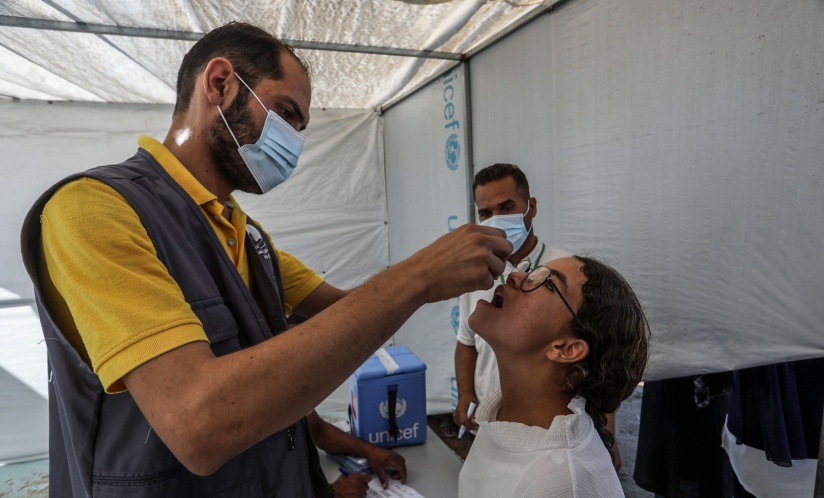Polio in Gaza: Questions and Answers with an Infectious Disease Expert

Gaza is facing a new health crisis as it experiences its first polio outbreak in 25 years. Poliovirus was initially detected in sewage in June, and officials recently confirmed the first case of paralytic polio in a 10-month-old child.
The World Health Organization (WHO) is launching an effort to vaccinate Gaza’s children against polio, and hopefully contain the spread of disease. Below, Kristin Nelson, PhD, assistant professor of epidemiology, breaks down how polio spreads, the public health measures that can contain it, and the challenges ahead.
How is polio transmitted, and what conditions make it easier for polio to spread?
Polio is a disease that's spread via the fecal-oral route, which means that you can contract it by consuming food or water that is contaminated with polio virus. Usually, the reason that food or water is contaminated with poliovirus is that it somehow comes into contact with fecal matter from people who are infected with polio.
That's common when sanitation systems are suboptimal and generally in situations where the public health infrastructure is compromised. But even under those conditions, vaccination is protective, and so we only see outbreaks of polio when vaccination coverage dips to low levels. Oftentimes that's due to interruptions in routine immunization activities for young children.
Is a reduction in vaccination the main reason why polio is spreading in Gaza right now?
We often see polio outbreaks in places that are affected by conflict, like Gaza, because those are the conditions that can interrupt vaccination activities and lead to environmental conditions that can sustain the transmission of poliovirus.
At this point, there is only one confirmed polio case in Gaza, but one case is very concerning. About 75% of people who are infected with the poliovirus will not show any symptoms at all, and only about 1 in 200 that are infected will have paralysis or other central nervous system involvement. When we detect just one case of polio-associated paralysis, it means that there are a lot of infections, we just don't necessarily know about all of them.
WHO is organizing a polio vaccination campaign in Gaza right now. What challenges might this campaign face?
The goal is to attain 90-95% vaccination coverage by deploying about 1.2 million doses of the vaccine, and the challenges there are several.
The first challenge is that the vaccine that they're using needs to be kept cold, and keeping vaccines cold requires a lot of infrastructure. It requires refrigerators and fuel to run those refrigerators, which poses a challenge if it is in short supply.
One of the other challenges stems from the displacement of people in Gaza. Polio vaccination campaigns in other circumstances are often house to house, meaning that a vaccination team will go out and they will knock on people's doors and vaccinate everyone who's eligible in the household. When many people have been displaced from their homes, you have to ask people to travel to a vaccination site. You have to let people know where and when the vaccine is going to be offered, but you also have to reassure people that it's safe to leave their homes and to go to those sites.
How do you monitor the spread of polio in a conflict zone like Gaza?
After a vaccination campaign, health surveillance is essential to monitor additional cases of polio and know whether the campaign is working. Monitoring can take several different forms.
Typically for polio, we conduct environmental sampling, typically sampling of water and sewage, to monitor for circulation of the virus. We also need to be able to detect further cases of polio in children should they occur. In the context of Gaza, where the health care system is already severely compromised, that could be difficult.
It can also be challenging to detect additional cases of polio because some of the early symptoms are very similar to other infections. Polio is not the only infection circulating in Gaza, so finding polio cases becomes more difficult.
Do we need to be concerned about this polio outbreak spreading outside the borders of Gaza?
Any time that we see polio, we're concerned with containment. We want it to stay in one place so that we can launch vaccination campaigns that stop the outbreak.
There is always a risk that, if polio is circulating at high levels, it could be exported to other areas. That’s how polio made its way to Gaza in the first place. However, if vaccination coverage is sufficiently high in an area, there won’t be an outbreak.
Vaccination is the best protection against polio, both in the place where that outbreak is happening and elsewhere.